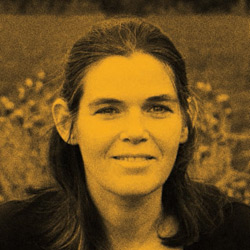
In April, Daphne Koller, a professor of computer science at Stanford University, received the first-ever ACM-Infosys Foundation Award in Computing Sciences for her groundbreaking approach to artificial intelligence.
How did your interest in relational logic and probability first develop?
What really sparked my interest was when I went to UC-Berkeley for my post-doc, and I realized how useful probabilistic modeling methods are—techniques like Bayesian networks—but, on the other hand, how brittle they are.
Brittle?
[Probability is] a language that’s very restricted in its expressive power because it can only refer to specific, concrete entities.
At Berkeley, I remember speaking with a graduate student who was building a model for vehicle traffic on a freeway. He had this wonderful model that was getting great results, but it only applied to a three-lane freeway. If he wanted to add another lane, it would take him two weeks to do the model.
And that’s where logic entered the picture.
The language of logic allows you to come up with much more general rules for describing the properties of objects and their interactions with each other. It’s a good way of extending the power of probability to something that’s more expressive and forceful.
That would be the synthesis known as probabilistic relational modeling.
What we did is take this language of objects and relations and add the ability to make probabilistic statements, which enables you to represent probability distributions over networks of interrelated individuals.
It also enables you to create models of considerably more complex systems.
Yes, and that’s been a focus of my work ever since. The world is very complex: people interact with other people as well as with objects and places. If you want to describe what’s going on, you have to think about networks of things that interact with one another. We’ve found that by opening the lens a little wider and thinking not just about a single object but about everything to which it’s tied, you can reach much more informed conclusions.
Which was an insight you brought to the field of artificial intelligence…
Well, I wasn’t the only one involved. There had been two almost opposing threads of work in artificial intelligence: there were the traditional AI folks, who grew up on the idea of logic as the most expressive language for representing the complexities of our world. On the other side were people who came in from the cognitive reasoning and machine learning side, who said, "Look, the world is noisy and messy, and we need to somehow deal with the fact that we don’t know things with certainty." And they were both right, and they both had important points to make, and that’s why they kept arguing with each other.
How did probabilistic relational modeling help settle the dispute?
The synthesis of logic and probability allows you to learn this type of holistic representation [of complex systems] from real-world data. It gives you the ability to learn higher-level patterns that talk about the relationships between different individuals in a reusable way.
You’ve begun applying your techniques to the field of biology.
Originally, it was a method in search of a problem. I had this technology that integrated logic and probability, and we had done a lot of work on understanding the patterns that underlay complex data sets. Initially, we were looking for rich data sets to motivate our work. But I quickly became interested in the problem in and of itself.
What problem is that?
Biology is undergoing a transition from a purely experimental science—where one studies small pieces of the system in a very hypothesis-driven way—to a field where enormous amounts of data about an entire cellular system can be collected in a matter of weeks. So we’ve got millions of data points that are telling us very important insights, and we have no idea how to get at them.
What have you learned about interdisciplinary collaboration from your work with biologists?
The important thing is to set up a collaborative effort where each side respects the skills, insights, and evaluation criteria of the other. For biologists to care about what you build, you need to convince them that it actually produces good biology. You have to train yourself to understand what things they care about, and at the same time you can train them in the methods of your community.
So it’s not just learning a new scientific language, but training yourself to respect a different research process.
It’s a question of finding people who are capable of learning enough of the other side’s language to make the collaboration productive.



Join the Discussion (0)
Become a Member or Sign In to Post a Comment